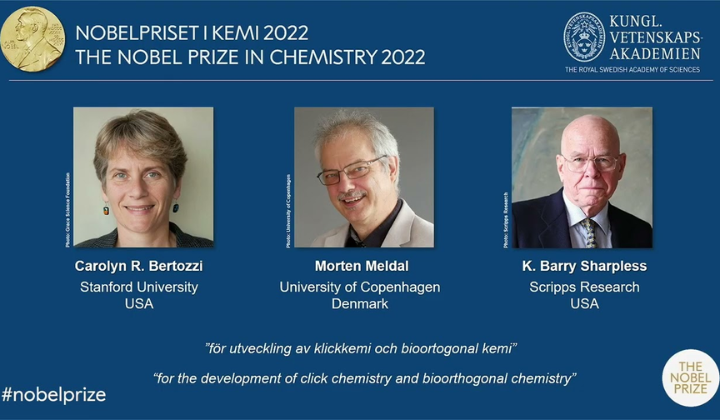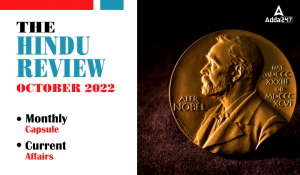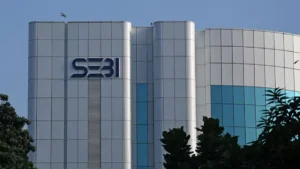The Nobel Prize in Chemistry 2025 was awarded to Susumu Kitagawa, Richard Robson, and Omar M. Yaghi by the Royal Swedish Academy of Sciences for their groundbreaking work on metal organic frameworks (MOFs). These innovative molecular structures feature large, porous cavities that allow molecules to move in and out, enabling a wide range of practical applications.
Nobel Prize in Chemistry 2025
The Nobel Prize in Chemistry 2025 has been awarded to Susumu Kitagawa, Richard Robson, and Omar M. Yaghi for their work on metal–organic frameworks (MOFs). These scientists developed a special type of molecular structure with large cavities that allow molecules to move in and out. Metal–organic frameworks have many practical uses, such as harvesting water from desert air, removing pollutants from water, capturing carbon dioxide, and storing hydrogen.
Contributions of the Chemistry Nobel Prize Laureates
The 2025 Nobel Prize in Chemistry recognizes the groundbreaking work of Richard Robson, Susumu Kitagawa, and Omar M. Yaghi in developing metal–organic frameworks (MOFs). Each of these scientists made key contributions that built the foundation, improved stability, and expanded the possibilities of these versatile molecular structures.
Richard Robson (from 1989)
Born: 4 June 1937, Glusburn, United Kingdom
Affiliation: University of Melbourne, Melbourne, Australia
Awarded For: Development of metal–organic frameworks (MOFs)
He started the field by creating the first well-ordered and spacious crystals using metal-organic building blocks. His early structures were not very stable but laid the foundation for future research.
Susumu Kitagawa (from 1992)
Born: 4 July 1951, Kyoto, Japan
Affiliation: Kyoto University, Kyoto, Japan
Awarded For: Development of metal–organic frameworks (MOFs)
He strengthened the framework by showing that gases could flow in and out of these structures. He also predicted that MOFs could be made flexible, allowing them to change shape in response to their surroundings.
Omar M. Yaghi (from the 1990s)
Born: 9 February 1965, Amman, Jordan
Affiliation: University of California, Berkeley, CA, USA
Awarded For: Development of metal–organic frameworks (MOFs)
He made the first highly stable MOFs and showed that these structures could be carefully designed and modified for specific uses. He also coined the term Metal-Organic Frameworks (MOFs).
Impact of Their Work
The development of metal–organic frameworks (MOFs) has created materials with enormous potential for tackling global challenges:
- Carbon capture: MOFs can trap carbon dioxide from industrial emissions. Some can capture up to 90% of CO₂ in lab experiments, helping reduce greenhouse gases.
- Water purification and harvesting: They remove harmful pollutants, including PFAS (“forever chemicals”), and can extract several liters of water per kilogram of material from desert air daily.
- Gas storage and separation: MOFs can safely store hydrogen and methane, aiding clean energy solutions, and efficiently separate gases for industrial processes.
- Drug delivery and catalysis: These frameworks can improve targeted drug delivery, reduce side effects, and act as catalysts for faster, more efficient chemical reactions.
- Energy storage and conversion: MOFs can be used in batteries and supercapacitors, improving energy storage capacity and efficiency.
- Environmental cleanup: They can capture toxic gases and heavy metals from the air and water, helping reduce pollution.
- Sensors: MOFs can detect tiny amounts of chemicals, making them useful in medical diagnostics and environmental monitoring.




 GA Capsule for SBI Clerk Mains 2025, Dow...
GA Capsule for SBI Clerk Mains 2025, Dow...
 The Hindu Review October 2022: Download ...
The Hindu Review October 2022: Download ...
 SEBI Grade A Notification 2025 Out for 1...
SEBI Grade A Notification 2025 Out for 1...

